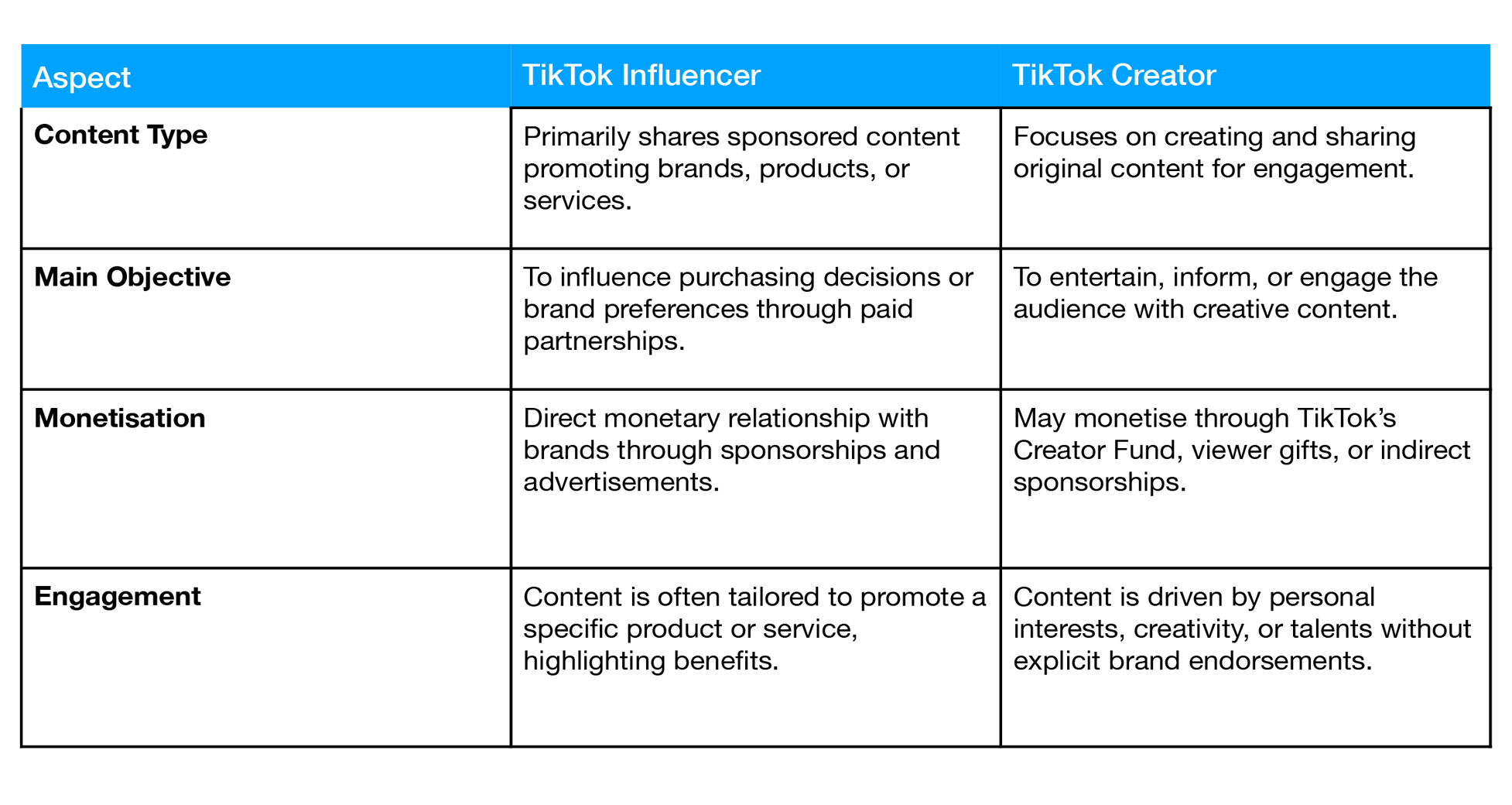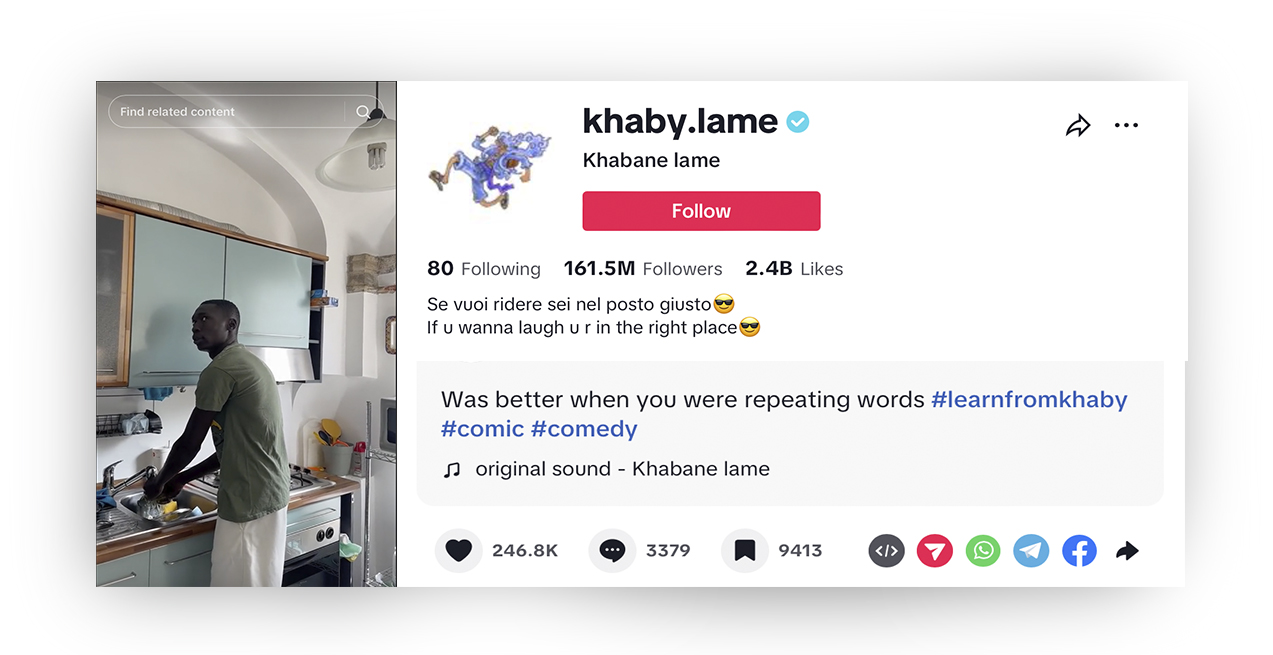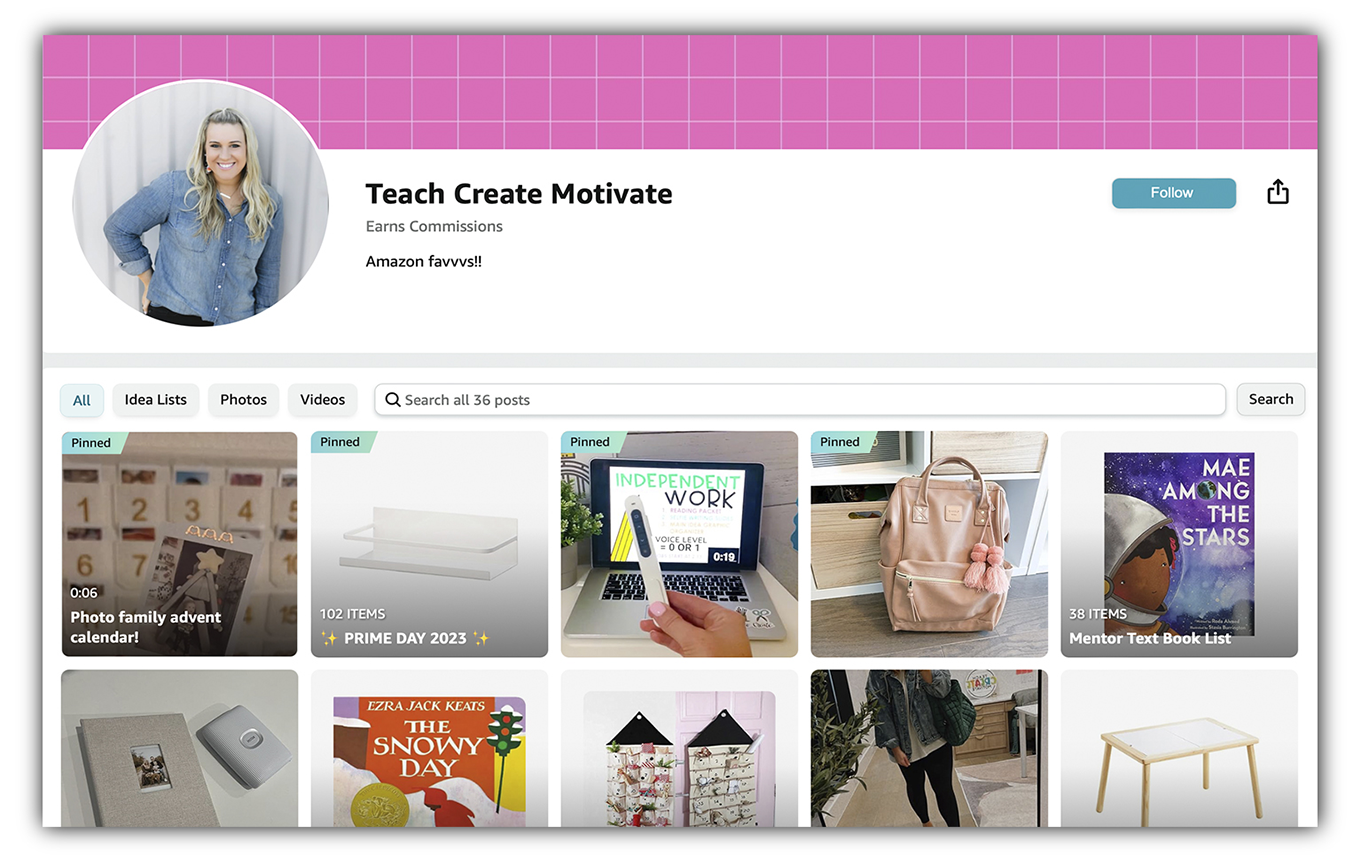Finding the right influencers on Instagram, TikTok, and YouTube is crucial in leveraging influencer marketing to boost brand visibility and engage a targeted audience effectively.
With countless creators, each boasting unique strengths and follower demographics, pinpointing those who align perfectly with your brand’s identity and marketing strategy is critical.
This guide aims to navigate the intricacies of influencer collaboration, ensuring your products resonate with the desired audience through authentic and impactful partnerships. By understanding the nuances of each platform and the significance of aligning with influencers who share your brand’s ethos, businesses can unlock new avenues for growth and engagement.
What is an Influencer?

In the vibrant world of digital media, an influencer stands out as a key player with the unique ability to shape opinions, trends, and consumer behaviours through engaging content on platforms like Instagram, YouTube, and TikTok. These individuals, ranging from bloggers and content creators to industry experts and celebrities, have cultivated a deep connection with a devoted audience within their niche or industry. Through this connection, they influence their followers’ preferences and decisions.
- Audience engagement: Influencers engage with their audience through authentic and relatable content.
- Niche expertise: They are often considered thought leaders within their field, offering insights and information that aren’t readily available elsewhere.
- Content variety: From tutorials and reviews to behind-the-scenes glimpses, influencers utilise a diverse content strategy to maintain and grow their follower base.

Crossnetics: Enhancing Influencer Collaborations
For brands aiming to harness the power of influencer marketing, Crossnetics offers a streamlined solution. This platform simplifies finding and partnering with influencers who align with your brand’s vision and values. With Crossnetics, you can easily tap into a network of influencers to boost your brand’s visibility and engagement, making it an essential tool for marketers and business owners looking to make a mark in today’s digital world.
Instagram Influencers: Finding the Right One
Selecting the Instagram influencer is a choice that can significantly influence your brand’s online presence. It goes beyond numbers; it’s about finding a partnership that strengthens brand credibility, boosts brand awareness and truly resonates with customers.
The key to a collaboration lies in choosing influencers whose values align with your brand, who have an engaged audience and whose influence is based on authenticity rather than inflated follower counts achieved through bots and reciprocal follows.
Critical Considerations for Selecting an Instagram Influencer:
- Audience quality: Ensure the influencer’s followers are real, active users interested in your niche.
- Credibility and authenticity: The influencer should have a track record of honest, transparent interactions with their audience.
- Alignment with brand values: Their content, tone, and style should resonate with your brand’s identity.
- Engagement rate: High engagement rates often indicate a loyal and attentive audience.
- Brand reputation: Partnering with the right influencer can enhance your brand’s reputation, while the wrong choice may harm it.
Brittany Xavier (@brittanyxavier on Instagram) is a testament to the power of authenticity and strategic content creation in influencer marketing. Starting with posts about affordable outfits, Brittany has grown into a high-fashion icon, amassing 1.5 million followers. Her ability to blend designer and fast-fashion items has earned her a significant following on Instagram and led to successful collaborations, like her collection with Revolve.

Navigating the Challenge of Fake Followers:
Ensuring an influencer’s audience is genuine is vital for the success of your campaign. Tools like HypeAuditor and FollowerCheck are instrumental in analysing an influencer’s follower base for authenticity, engagement rates, and potential fake followers. Moreover, platforms like Crossnetics are emerging as invaluable resources, offering brands a streamlined process to connect with verified influencers. Crossnetics stands out by vetting influencers for authenticity, ensuring brands partner with influencers who have genuine engagement and align with their marketing goals.
YouTube Influencers: How to Find Influencers Suitable for Your Brand
YouTube is an impactful platform that provides brands a unique chance to connect with their audience through captivating video content. The key to making the most of this opportunity is to find the perfect YouTube influencer who aligns with your brand’s values and creates high-quality content that truly resonates with your target audience.

Key Considerations When Selecting a YouTube Influencer:
- Brand values alignment: The influencer’s content and ethos should mirror your brand’s values. This alignment ensures that the promoted product is presented authentically to an audience that values the influencer’s opinion.
- Content quality: Quality photos and videos are non-negotiable. The influencer’s ability to produce high-quality content reflects directly on your brand, influencing how potential customers perceive the promoted product.
- Audience relevance: The influencer’s followers should overlap with your target market. An influencer with a quality audience that is engaged and interested in your niche can drive meaningful interactions and conversions.
- Truthfulness in promotion: Influencers who make videos that verify the truthfulness of the information about the products they promote are invaluable. Their commitment to honesty builds trust with their audience and, by extension, your brand.
- Recognised contacts and collaborations: Influencers with a history of successful brand collaborations bring recognised contacts and proven marketing strategies to the table, amplifying the potential success of your campaign.
Did you know that YouTube is the second most visited website globally, with users watching over a billion hours of video daily? This staggering statistic highlights the platform’s vast reach and the potential impact influencers can have on brand visibility and engagement.
[햄지]Hamzy, a prominent ASMR food influencer, has successfully carved a niche in the Mukbang and ASMR genres on YouTube. With a remarkable subscriber count of 11.9 million and a total view count surpassing 4.1 billion, Hamzy’s channel stands out for its engaging content that combines the love for cuisine with the sensory experience of ASMR. The channel’s popularity can be attributed to Hamzy’s infectious enthusiasm for food and the unique way meals are presented as captivating spectacles, making [햄지]Hamzy a go-to destination for food enthusiasts and ASMR fans alike.

Strategies for Finding the Right YouTube Influencer:
- Research and analytics: Utilise tools and platforms that offer insights into influencers’ audience demographics, engagement rates, and content quality.
- Engagement over numbers: Sometimes, influencers with smaller, more dedicated communities can offer more value than those with millions of subscribers but less engagement.
- Past collaborations: Review the influencer’s previous brand partnerships to assess their ability to integrate and promote products naturally within their content.
TikTok Influencers: Difference Between TikTok Influencer and TikTok creator?
Here’s a concise comparison highlighting the main differences between TikTok influencers and TikTok creators:

This comparison illustrates the distinct pathways TikTok influencers and creators navigate in engaging with their audience and monetising their content. Influencers often collaborate directly with brands to share sponsored content, whereas creators tend to focus on original content creation, possibly benefiting indirectly from monetisation avenues like TikTok’s Creator Fund.
For a TikTok Influencer example, Khabane Lame (@khaby.lame) is known for his short comedy skits highlighting the complexity of simple tasks. As a TikTok Creator, Bella Poarch (@bellapoarch) focuses on gaming and cosplay content, gaining fame with her lip-syncing videos. Both have leveraged TikTok to build substantial followings, illustrating the platform’s diverse content landscape. For more details on TikTok’s top influencers, you can visit Influencer Marketing Hub.

Amazon Influencers: 3 Ways to Spot Creators
In e-commerce, Amazon provides brands an unparalleled platform to connect with consumers. Within this realm, Amazon influencers have emerged as influential individuals who bridge the gap between brands and potential customers. They do so by creating captivating content. Recognising the influencers for your brand can significantly enhance your presence and boost sales. Here are three effective strategies to help you identify these creators.
1. Dive into Amazon Live and #FoundItOnAmazon
Amazon Live presents a dynamic platform where influencers stream live videos showcasing and reviewing products in real time. This interactive space allows viewers to ask questions and get instant feedback, creating a trusted relationship between the influencer and their audience. Coupled with #FoundItOnAmazon, a feature aggregating content from various influencers, these tools offer brands a direct line to active and engaged Amazon influencers. By browsing Amazon Live streams and exploring the #FoundItOnAmazon page, brands can identify influencers whose content and audience align with their products and values.
2. Leverage #Amazon Hashtags on Instagram and TikTok
Social media platforms like Instagram and TikTok are fertile grounds for influencer marketing. Influencers often use specific hashtags such as #AmazonFinds, #AmazonMustHaves, and #AmazonHaul to tag their content, making it easier for brands to discover potential collaborators. By searching these hashtags, brands can uncover influencers who specialise in their niche and have already cultivated a community interested in Amazon products. This method simplifies the search process and provides insight into the influencers’ engagement levels and content quality.
3. Finding Amazon Influencers Among Your Own Followers
Sometimes, the most effective collaborators are already within your reach. Scouring your brand’s followers on social networks can reveal influencers who are genuine fans of your products. These individuals can generate authentic content that resonates deeply with their followers, potentially leading to higher conversion rates. Engaging with these followers and analysing their profiles for influencer activity can uncover valuable partnerships based on genuine brand affinity.

Ashley Marquez is an exemplary Amazon influencer specialising in education, lifestyle, and fashion. She has partnered with several brands to enhance educational experiences, showcasing her ability to promote products that align with her passions effectively. Her success as an influencer is attributed to her engaging content and strong connection with her audience, making her an ideal example for businesses looking to collaborate with Amazon influencers.

How Brands Find Influencers
In today’s society, influencer marketing has become a vital tool for brands aiming to expand their reach and establish meaningful connections with their target audiences. Discovering the influencer involves aligning a brand’s campaign objectives with the influencer’s audience and values. Here, we outline five steps brands should follow to ensure they collaborate with suited influencers for their marketing campaigns.
1. Outline Campaign Goals and Requirements
The first step in the journey towards a successful influencer partnership involves setting clear campaign goals and requirements. This might include desired outcomes such as increased brand awareness, more followers, or higher sales. By defining what success looks like, brands can better identify the influencers who have the potential to help them achieve these objectives.
2. Identify Influencers Who Align with Your Goals
Once the campaign goals are set, the next step is to list potential influencers who align with these objectives. This involves researching influencers within your niche or industry with a proven track record of engaging with their followers in ways that could benefit your brand.
3. Analyse Influencer Engagement Rates
Engagement rates are crucial in gauging an influencer’s ability to interact meaningfully with their audience. Brands calculate these rates by looking at the number of likes, comments, and shares relative to the influencer’s follower count. A high engagement rate indicates a loyal and active following, which is more valuable than a large but disengaged audience.
4. Ensure Relevance to Your Brand’s Offerings
The influencers selected must be relevant to your brand’s products or services. This means their content should naturally complement your offerings, and their audience should be the target market for your products. Relevance ensures the influencer’s endorsements feel authentic and resonate with their followers.
5. Choose Influencers Who Share Your Values
Authenticity is the cornerstone of influencer marketing. Brands should choose influencers who share their values and ethics. This alignment ensures a harmonious partnership and builds trust among the influencer’s followers. Influencers who genuinely believe in your brand can create more compelling and persuasive content.

Preparing to Find Influencers: Determine Your Target Audience
Before diving into the vast ocean of influencer marketing, brands must anchor themselves with a deep understanding of their target audience. Knowing who you are aiming to reach is the foundation of any successful marketing strategy, especially when planning to promote products through influencers. This knowledge isn’t just about demographics like age or location; it encompasses interests, values, and the social media platforms where your audience spends their time.
Identifying Your Audience:
- Age and Location: These basic demographics can help narrow the search for influencers who resonate with the same age group or geographic area.
- Interests: Knowing what captivates your audience’s attention will guide you to influencers who share similar passions or cover related topics.
- Values: Aligning with influencers who uphold the same principles as your brand ensures authenticity, a critical factor in influencer marketing.

You’ve Found an Influencer: What’s Next?
Discovering the right influencer for your brand marks the beginning of a promising journey in influencer marketing. This pivotal moment sets the stage for a collaboration that amplifies your brand’s message. The steps you take next are crucial in forging a successful partnership, ensuring that both parties are aligned and ready to engage their audience effectively.
Steps to Take After Finding an Influencer:
- Show genuine interest: Engage with the influencer’s content by commenting, tagging, and sharing. This shows your interest and starts building a rapport.
- Craft a tailored proposal: Reach out with a personalised proposal that outlines how you envision the collaboration. Highlight what you admire about their work and why it fits your brand perfectly.
- Discuss content formats and engagement metrics: Share your ideas on potential content formats, whether blogs, social media posts, or videos. Discuss engagement metrics like follower growth and demographics to ensure they align with your campaign goals.
- Provide a clear call-to-action: Your proposal should include a specific call-to-action, guiding the influencer on the next steps. Make the process straightforward, whether it’s a follow-up meeting or sending over a media kit.
- Negotiate a partnership agreement: Once mutual interest is confirmed, draft a partnership agreement detailing the collaboration scope, deliverables, timelines, and compensation. Clear agreements prevent misunderstandings and set a professional tone for the collaboration.
- Follower demographics and niche alignment: Ensure the influencer’s follower demographics and niche align with your target audience. This alignment is crucial for the authenticity and effectiveness of the campaign.
Final thoughts
As we wrap up our journey through the intricacies of influencer marketing, it’s clear that the right influencer can act as a powerful catalyst for your brand, transforming products into experiences and transactions into relationships. From identifying your target audience to forging meaningful collaborations, each step brings you closer to achieving a resonant brand presence.
Remember, Crossnetics stands ready to assist you in navigating this vibrant landscape, offering a comprehensive suite of tools to connect you with the perfect creator for your brand’s unique story. Discover the ideal influencer on Crossnetics to elevate your product and brand.
Embrace the future of marketing with confidence and creativity.
FAQ
What is influencer marketing?
Influencer marketing is a strategy wherein brands collaborate with influencers to promote their products, services or campaigns. This approach uses the influencer’s follower base to reach an audience, establishing trust and driving engagement through storytelling and endorsements.
How are influencers categorised based on their number of followers?
Influencers can be classified based on the size of their follower count:
- Mega influencers: These are individuals who have over 1 million followers.
- Macro influencers: They typically have between 100K to 1 million followers.
- Micro influencers: This category includes those with follower counts ranging from 10K to 100K.
- Nano influencers: They usually have follower counts between 1K and 10K.
Is micro-influencer marketing effective for small businesses?
Yes, micro-influencer marketing can be highly effective for small businesses. Micro-influencers often have a more engaged and niche audience, allowing for a targeted and authentic promotion that resonates well with potential customers, offering a higher ROI than broader campaigns.
How can I ensure the authenticity of an influencer’s follower base?
To verify authenticity, consider:
- Analysing engagement rates for genuine interaction.
- Examining follower growth for organic increases.
- Using tools to inspect follower demographics and engagement patterns.
- Observing the quality and relevance of comments and likes.
How does influencer marketing differ from content marketing?
Influencer marketing focuses on leveraging the credibility and audience of influencers to promote a brand. In contrast, content marketing revolves around creating and distributing valuable content to attract and retain a clearly defined audience. Both aim to drive profitable customer action but through different methods and channels.
